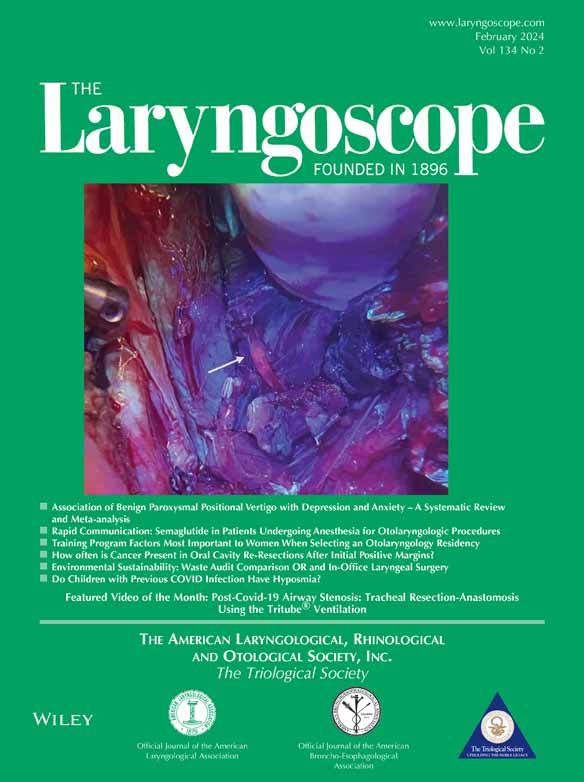Hypotensive Levels on Endoscopic Sinus Surgery Visibility: A Randomized Non-Inferiority Trial
The authors have no conflicts of interest to disclose.
Abstract
Objective
Optimization of endoscopic sinus surgery (ESS) conditions is a common focus of interest for otolaryngologists and anesthesiologists. Relying on hypotension alone to achieve a bloodless field may not without risks. We sought to determine whether ESS is feasible in the context of moderate hypotension.
Methods
This randomized non-inferiority trial enrolled 96 adult patients who were to undergo ESS. The patients were divided into two groups: Controlled hypotension group (n = 48, MAP reduction to 55–65 mmHg, minimum of 60% of baseline blood pressure) or Individualized hypotension group (n = 48, MAP reduction to 75–80% of baseline blood pressure). All participants were placed in 10° reverse Trendelenburg position during ESS, and cottonoid patties dammed with epinephrine was recommended to clear the operative field of bleeding. The two groups were compared according to Boezaart grading scale (BS) score, estimated blood loss, blood loss rate, arterial lactate level and postoperative recovery.
Results
Both levels of intraoperative hypotension (62.2 ± 2.3 mmHg vs. 74.0 ± 2.8 mmHg) provided acceptable surgical conditions with no difference in mean BS scores [2.00 (1.88–2.33) vs. 2.00 (1.85–2.45), p = 0.926]. The 95% CI for median value differences in mean BS scores is lower than the preset non-inferiority margin. There were no differences in blood loss rate and estimated blood loss between two groups (p > 0.05) Postoperative arterial lactate and Ramsay sedation scores were significantly different between the two groups (p < 0.05).
Conclusions
In ESS, both levels of intraoperative hypotension, combined with position adjustment and low-concentration adrenaline to constrict nasal mucosal blood vessels, provided acceptable surgical conditions.
Level of Evidence
2 Laryngoscope, 134:569–576, 2024
Open Research
DATA AVAILABILITY
The data used during the current study available from the corresponding author on reasonable request.




